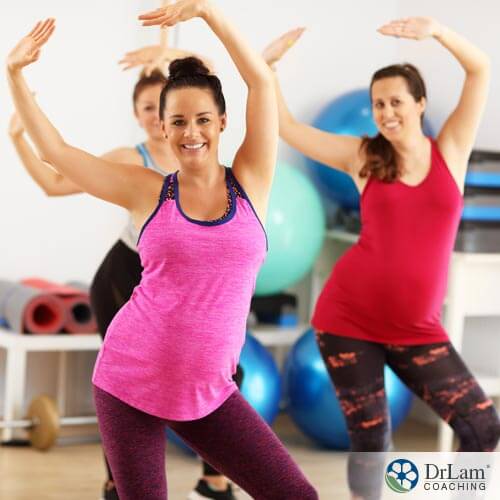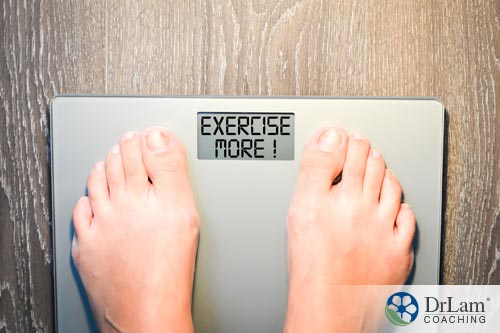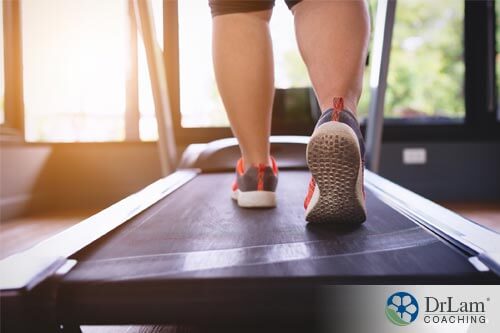The term ‘fecundability’ refers to a woman’s probability of becoming pregnant within a certain period of time, usually within one menstrual cycle. Many women who are deemed infertile have difficulty becoming pregnant or having a pregnancy reach full term. However, research now suggests there is a close correlation between physical activity and pregnancy. According to this study, women with a higher body mass index show an improved probability of becoming pregnant when they included physical activity in their daily regime.
 Researchers from the University of Massachusetts, Amherst conducted a study to determine whether physical activity and pregnancy are correlated. In other words, does physical activity have an impact on fecundability? This new study follows on from previous research which demonstrated that exercise can alter endocrine function. In particular, walking has shown great promise mainly due to the fact it is easy to implement when making lifestyle changes, can be done anywhere, most people can do it, and no special equipment is required.
Researchers from the University of Massachusetts, Amherst conducted a study to determine whether physical activity and pregnancy are correlated. In other words, does physical activity have an impact on fecundability? This new study follows on from previous research which demonstrated that exercise can alter endocrine function. In particular, walking has shown great promise mainly due to the fact it is easy to implement when making lifestyle changes, can be done anywhere, most people can do it, and no special equipment is required.
The 1214 study participants were healthy women between the ages of 18 and 40 years that had previously experienced pregnancy losses. Metrics related to their physical activity and pregnancy status were tracked over a six-month period, throughout which various samples were taken to test their fertility levels.
Results of the study indicate there is no relationship between most types of physical activity and pregnancy with one exception—walking. Walking, it seems, has a positive effect on women who were obese—relatively high body mass index (BMI)—and had already experienced one or two miscarriages.
There are a number of factors that place women at a higher risk of miscarriage. These can include the following:
Women over the age of forty are at higher risk of having a baby with a chromosomal abnormality and of miscarrying.
If either parent or another family member has a genetic abnormality, the risk of miscarriage is higher.
Using drugs, drinking alcohol, or smoking, especially while pregnant, increases your chances of a miscarriage.
You are at a higher risk of miscarriage if you have an infectious disease such as HIV, measles, rubella, listeria, and mumps.
Certain environmental toxins , such as chemicals, may increase your risk of miscarriage. Toxins may also damage sperm in men. While damaged sperm may still be able to fertilize an egg, the chances of miscarriage is increased.
Certain prescription and over-the-counter medications may increase your risk of miscarriage. If you’re taking any medications, it’s important to find out whether they could negatively affect your pregnancy or unborn fetus.
Chances of having a miscarriage increase if the uterus or cervix are compromised in any way, such as having uterine fibroids or scarring of the uterus.
Certain disorders such as a hormonal imbalances, diabetes, or autoimmune disorders can increase your chances of a miscarriage.
Research has shown that while obese women have a propensity to be very fertile and on average, have fewer problems with becoming pregnant, the chances of miscarriage are much higher than for women of a healthy weight.
 One of the factors that plays a role in obesity is your hormones. Hormones are chemical messengers released by various glands throughout your body and play a role in regulating different systems, such as your nervous system and digestive system. Your body’s system of glands is part of the endocrine system, which helps your body function properly and cope with stress. Obesity can be caused by a hormone deficit or excess hormones, but obesity itself can also lead to hormonal changes.
One of the factors that plays a role in obesity is your hormones. Hormones are chemical messengers released by various glands throughout your body and play a role in regulating different systems, such as your nervous system and digestive system. Your body’s system of glands is part of the endocrine system, which helps your body function properly and cope with stress. Obesity can be caused by a hormone deficit or excess hormones, but obesity itself can also lead to hormonal changes.
The hormones produced by your ovaries are regulated by the hypothalamic-pituitary-adrenal (HPA) axis which plays a role in the function of your adrenal glands, thyroid gland, and ovaries. However, any type of stress—physical, psychological, or environmental—results in your adrenal glands producing more cortisol in order to deal with the stressor at hand. Once the stress has subsided, cortisol production usually returns to baseline function but in cases of prolonged stress, cortisol production will remain high, ultimately leading to hormonal imbalances. This is because the production of precursory hormones used to make cortisol increases while the production of other hormones is either reduced or discontinued. Hormonal imbalances can affect all the systems of your body and may result in obesity.
One of the systems affected by this imbalance is the ovarian-adrenal-thyroid (OAT) axis. Therefore, hormonal imbalances can worsen the symptoms of adrenal fatigue and could affect your chances of becoming pregnant as well. Not to mention that an underactive thyroid promotes obesity. Estrogen production can also be compromised by an OAT imbalance which in turn reduces your chances of becoming pregnant. Low progesterone levels and high estrogen levels accompanied by insulin resistance (common in obese people) can cause miscarriage too.
When it comes to physical activity and pregnancy, walking is a great option to address any hormonal (and other health-related) issues in obese women or even women who are under a great deal of stress, regardless of the cause. Physical activity triggers the release of endorphins in your brain. Endorphins are chemical messengers that not only reduce how you perceive pain, but also give you a feeling of euphoria. In this way, they reduce your brain’s perception of stress, in turn allowing your adrenals to decrease cortisol production, resulting in the more balanced production of other hormones. Physical activity can benefit all the various systems of your body in the long run and your chances of carrying a baby to term will also improve.
 In addition to helping balance your hormones, walking has some other great benefits, such as strengthening your cardiovascular system, improving cholesterol levels, and aiding with weight lose.
In addition to helping balance your hormones, walking has some other great benefits, such as strengthening your cardiovascular system, improving cholesterol levels, and aiding with weight lose.
No matter what your BMI is, physical activity and pregnancy should go hand in hand, not only for the benefit of you as a mother but for the benefit of your unborn child as well. Please remember though, when it comes to physical activity and pregnancy, you don’t necessarily have to join the gym and start doing strenuous workouts. Walking is the easiest, gentlest form of exercise there is, plus you can do it anywhere and it doesn’t cost a cent.
It’s difficult to determine whether physical activity and pregnancy impact adrenal fatigue. This will depend on a number of factors. However, physical activity does have a positive effect on adrenal fatigue as well as your chances of becoming pregnant and carrying a baby to term.
